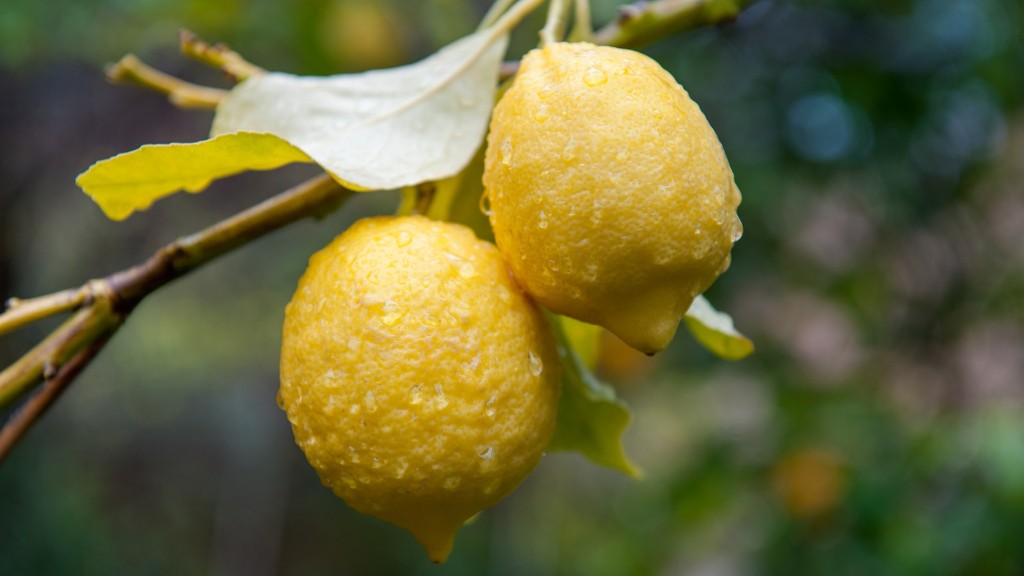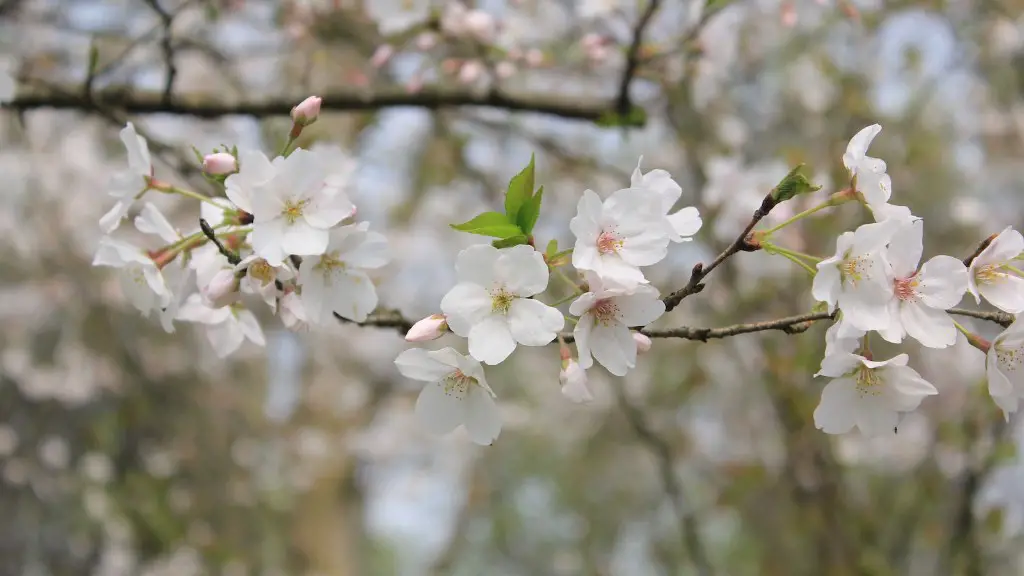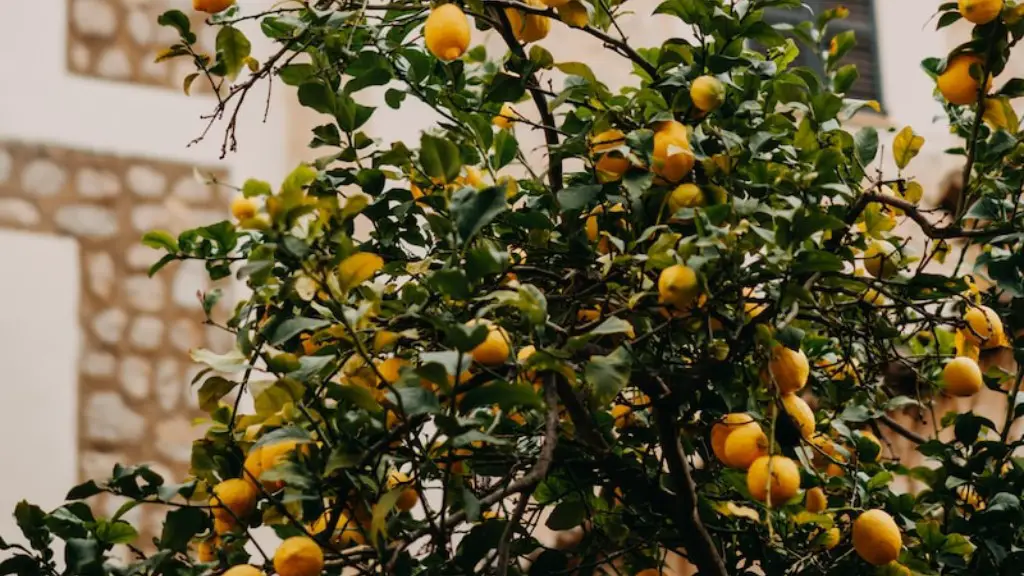Dwarf lemon trees are a perfect choice if you’re looking for a space-saving option and convenient way of growing lemons indoors. The trees are usually between 15-20 inches tall when fully grown. A dwarf lemon tree produces roughly the same amount of fruit as a standard-sized lemon tree, but requires far less pruning and maintenance. Dwarf lemon trees have other advantages too; they can produce fruit from a younger age and in a reduced time-frame compared to regular lemon trees.
Regular lemon trees can reach heights of up to 25 feet and require significant pruning and maintenance. Compared to these, dwarf lemon trees are comparatively low-maintenance and can produce the same sweet lemons within their smaller stature. Dwarf lemon trees are an adaptation of the traditional, larger variety and can be grown in relatively small spaces. The trees are usually drought tolerant and don’t require regular heavy watering. In addition, they are suited to different soil types and generally require minimal fertilization.
It is important to consider the conditions in which you will be growing your miniature lemon tree. Dwarf lemon trees need room to breathe and require plenty of sunlight and airflow to reach their potential. A conservatory or garden with a southern orientation is ideal. Dwarf lemon trees need a minimum of six hours of direct sunlight per day and should be placed in an area free from strong winds. Watch out for cold temperatures and protect the tree when temperatures drop to 5°C or lower, as this can cause the tree to die.
When planting a dwarf lemon tree, use a potting soil specifically designed for citrus trees. Add a layer of gravel or expanded shale in the bottom of the pot for added drainage, then fill the pot with the soil up to about two inches from the top. Plant the sapling and water thoroughly. You may need to transfer the dwarf lemon tree to a bigger pot as the tree grows.
It’s important to prune a dwarf lemon tree in order to keep the branches from becoming congested and to encourage growth in the desired direction. When pruning, use sterilized pruning tools and make sure the cuts are even. Prune any branches that show signs of disease or damage and keep dead wood to a minimum. Also, consider fertilizing your dwarf lemon tree, usually as the weather changes; to make sure it gets the right nutrients to grow and foster strong fruit production.
Location
Dwarf lemon trees need to be planted in the right environment to support their growth and ensure they can produce the desired fruit. A bright conservatory or garden with a southern orientation is ideal, as this allows for maximal sunlight and airflow. This environment should also be protected from strong winds and cold temperatures, as these can damage or inhibit the growth of the tree.
It’s important to ensure the dwarf lemon tree has enough space to grow, so only use a pot that is large enough for the tree’s roots to spread. When planting a dwarf lemon tree, use a potting soil specifically designed for citrus trees and mix with a layer of gravel or expanded shale.
Pruning
Regular pruning of a dwarf lemon tree is essential to ensure the branches don’t become congested and to encourage growth in the desired direction. When pruning, use sterilized pruning tools and make sure the cuts are even. Prune any branches that show signs of disease or damage and keep dead wood to a minimum.
Fruit production can also be enhanced with extra pruning, in particular thinning and shaping the lemon tree. Thinning involves reducing the density of the plant, this helps promote better airflow and less competition between branches. Shaping the tree should aim to increase sunlight exposure and improve the overall structure of the tree allowing it to properly support the fruit.
Fertilization
Fertilizing a dwarf lemon tree can be beneficial in getting the right nutrients to promote its growth and to foster strong fruit production. It’s important to provide the right fertilizer, as citrus trees are more sensitive to certain types of fertilizer than other plants. Choose a fertilizer that is specifically designed for citrus trees, and consider adding a layer of mulch to the soil to reduce water evaporation.
It’s worthwhile to keep a record of the amount and type of fertilizer used over time to ensure the tree isn’t overwhelmed with nutrients. It’s also beneficial to use organic fertilizer that gets slowly released into the soil, as this can help promote healthy growth.
Watering
Because dwarf lemon trees generally need less pruning, they also require less water than regular-sized lemon trees. A dwarf lemon tree requires roughly a gallon of water per day and should be watered over the root area, not over the entire tree. To help ensure proper hydration, water the soil around the tree and be sure to water deeply.
It’s important to watch out for dry and wilted leaves, which can be a sign of dehydration, and it’s especially important to do this during hot summer months. Check the soil in the pot for moisture to ensure the tree is getting enough water but not too much. If the soil is soggy, the tree may be overwatered and can become unhealthy.
Pests
To maintain a healthy dwarf lemon tree, it’s important to take precautions against pests and disease. Planting the tree in an area with plenty of airflow and sunlight can help limit the risk of insect infestations. In addition, regular cleaning and removing deadwood can help prevent the spread of disease.
Using organic insecticides and pesticide sprays can help limit the chances of infection and keep your tree free from pests. Consider taking preventative measures when planting; adding neroli oil to the soil can help keep unwanted visitors away. In particular, watch out for scale insects, mealybugs and thrips, as they can feed off the sugar in the tree’s leaves and cause severe damage.



